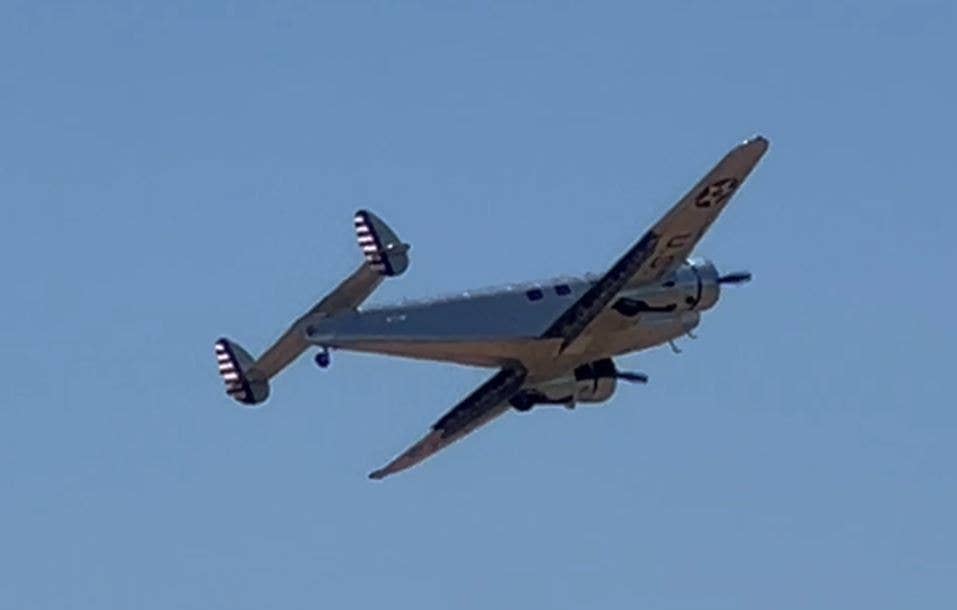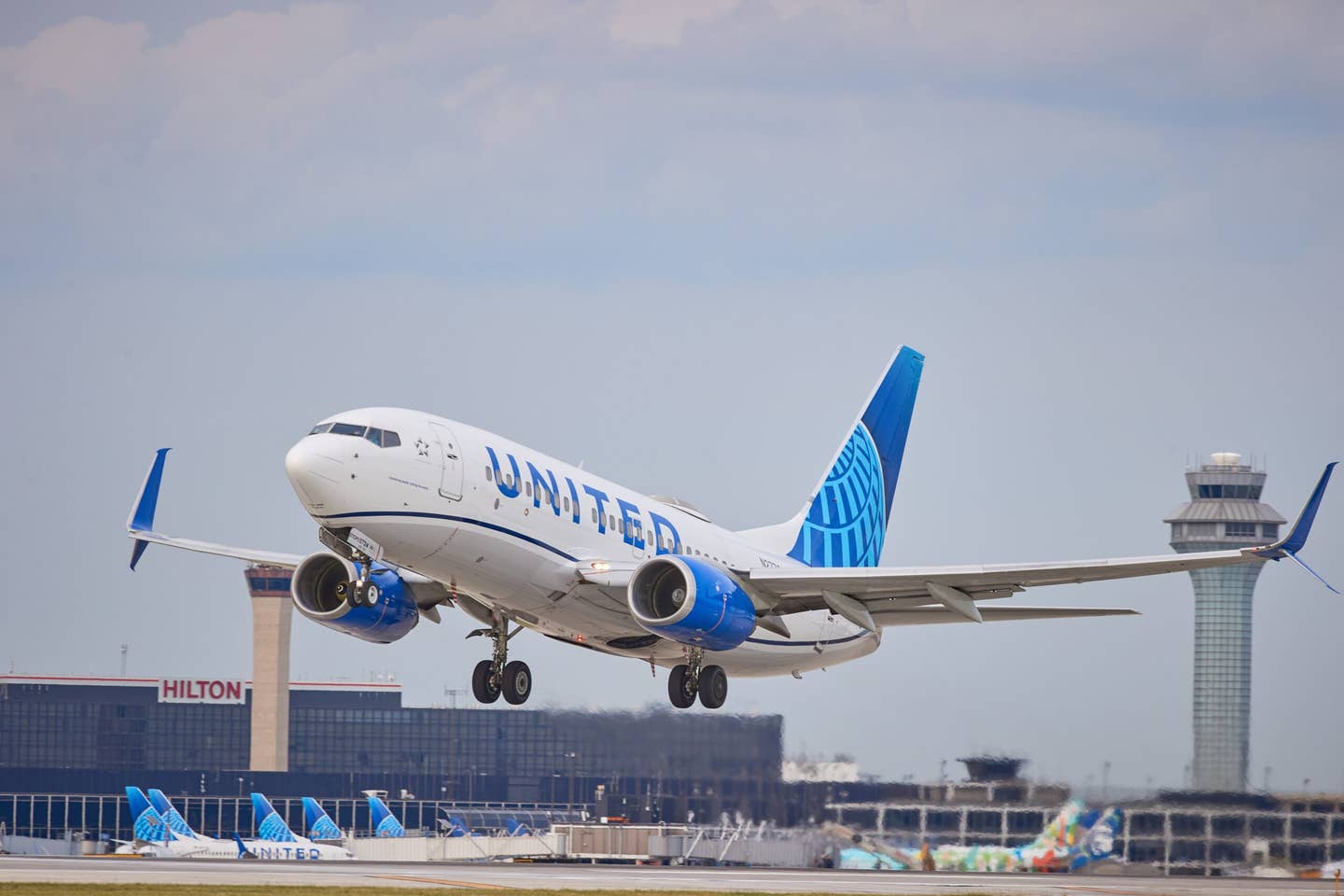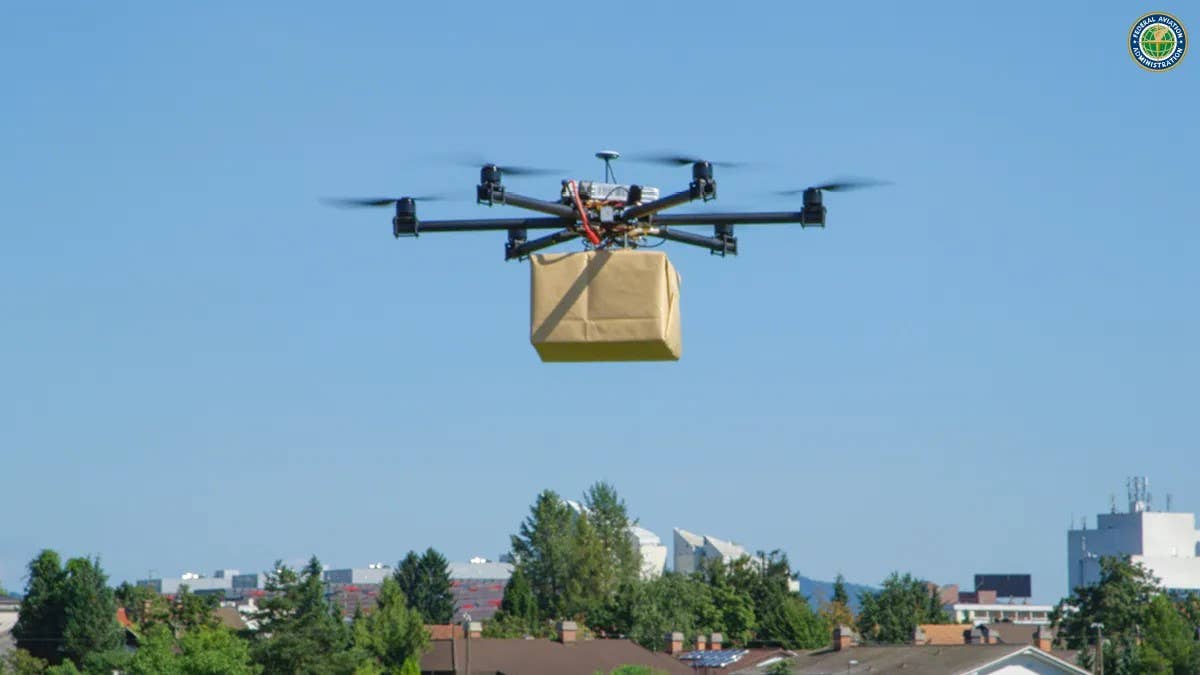NTSB Releases Details on 2 Lockheed 12A Crashes
The vintage aircraft accidents in California and Georgia occurred within three days of each other in June.

Screen capture of witness provided video of the accident airplane — Lockheed 12A (N93R)— with the flaps extended during the takeoff climb. [Courtesy: NTSB]
The National Transportation Safety Board (NTSB) has released details of two Lockheed 12A aircraft that crashed in separate accidents in two different states in the span of three days in June.
The first crash happened on June 15 in Chino, California, when Lockheed N93R was taking part in a Father's Day airshow. The pilot and copilot were killed when the aircraft crashed during takeoff. The pilot took off with the flaps fully extended.
Lockheed N93R
The NTSB noted that video of the takeoff shows the flaps down and the aircraft struggling to climb. The vintage twin reached an altitude of approximately 300 feet before plunging to the left. There was a post-impact fire.
The crew had lowered the flaps as part of the preflight inspection but did not retract them before takeoff. The NTSB noted that during engine start the ground crew used arm and hand signals to try to let the pilot and copilot know the flaps were in the fully extended position.
Lockheed N2072
The second accident occurred on June 18 at Seven Lakes Airport (62GA) in Jackson, Georgia. The pilot, the commercially rated copilot, and a passenger were seriously injured when the privately owned 1936 Lockheed 12A Electra Junior (N2072) veered off the turf runway during landing.
Video of the landing taken by a bystander on the ground shows the aircraft on approach to the turf runway with the flaps and gear down. The touchdown appears normal, then as the aircraft slows and the tailwheel settles to the ground, the aircraft veers to the left. The videographer lowers the camera so the aircraft’s impact with a tree is heard but not shown.
- READ MORE: 3 Left Injured in Georgia Lockheed 12A Crash
“The impact crushed the cockpit] aft toward the cabin,” the NTSB report said. “A tree trunk about 2 feet in circumference was observed within the cockpit. The instrument panel was buckled around the tree trunk. The pilot, co-pilot, and passenger seats were crushed up and aft."
The investigation quickly focused on the brakes and the tailwheel as both are used for directional control on the ground. Examination of the main landing gear braking system revealed hydraulic fluid on the landing gear strut and hydraulic fluid leaking from the brake line fitting.
"The steel-braided brake line B-nut fitting, which connected the right brake caliper to the rigid brake line attached to the right landing gear strut, was finger-tight, and hydraulic fluid was observed leaking from the fitting," the NTSB said.
The fitting on the left brake could not be moved by hand and there was no fluid leakage.
Investigators stated the tailwheel lock control lever was found in the locked position, but the locking tab on the control-wheel assembly appeared to be unlocked.
The NTSB final report on both accidents is likely several months out as it can take 18 to 24 months for investigations to be completed.

Subscribe to Our Newsletter
Get the latest FLYING stories delivered directly to your inbox






